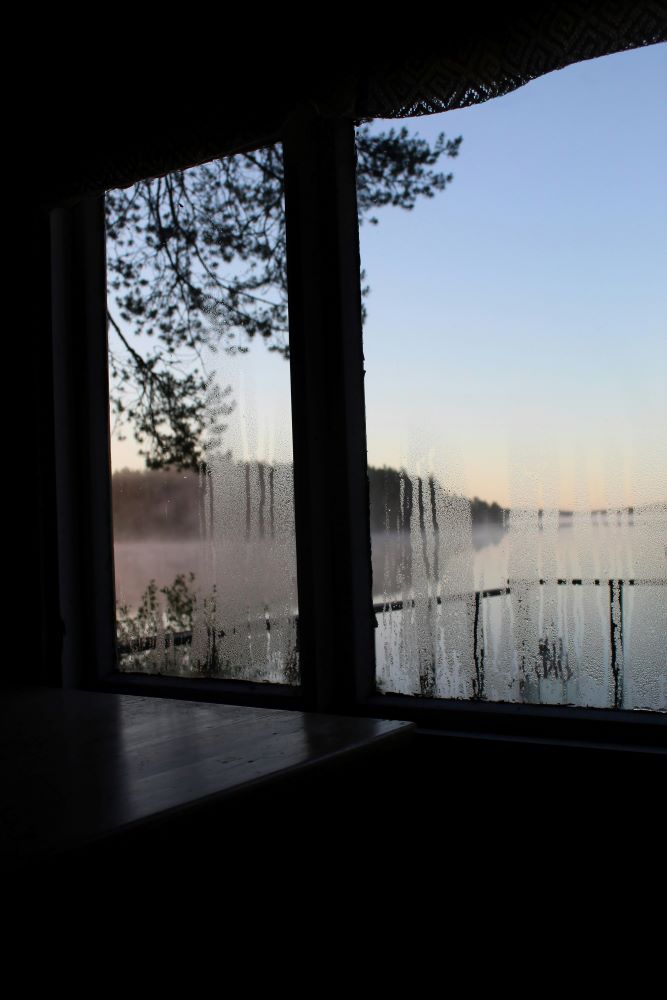How to manage excessive home humidity with dehumidifiers

The headlines have warned about heat waves and soaring humidity since the beginning of June this year for various areas of the US, and if you live in one of them, you just have to step outside for a moment to experience the mugginess. Or in the worst case, stay inside, because without dehumidification, leaky homes eventually become overly humid inside too. I recently experienced this in an upper room in my home that has no dedicated vent from the central AC system. When the window unit is not running, it gets excessively hot and humid and on the verge of mildew.
According to Nate Adams, HVAC and “home comfort” expert, everyone should be running a dehumidifier all the time. Here’s how a standard dehumidifier works:
Now, most people know about portable dehumidifiers, which you can roll around your house on casters and either empty the reservoir daily, or hook up a hose to drain continuously. They tend to be noisy and hot (the fan and compressor generate a good amount of heat), but even if you only run them while you’re not home, many do a good job to keep the humidity down. It’s best to place one in a central area with sufficient clearance so in/out airflows are not impeded by furniture or walls. Here’s an article on selecting one that fits your home/space.
Another solution is adding a whole house dehumidifier, which can be installed in a crawlspace, attic, or ideally, in a wall or mechanical room (inside the building envelope). We have an article on choosing a whole home dehumidifier here.
A third option is using your own central air system to dehumidify better.
If you have central air conditioning or a heat pump air conditioner, these can help, but most are better equipped to “cool” than to “dehumidify”. This means that even new units will get your home cooled down quick, but they are not removing enough humidity from the air in the process. A partial solution to this problem is “variable speed” or “inverter” units, which can operate at lower speeds so that cooling goes slower, allowing more time to dehumidify the air.
If you have a heat pump, though, it’s possible to ramp up dehumidification by doing reheat dehumidification. This is a concept widely used/understood in commercial systems, but not so much in residential. Here’s how it works:
Note that you have a cooling coil AND a reheating coil working in the same system. Most people would look at this and say, “why am I paying to heat the air I just cooled?” but when you look at the actual comfort and energy usage by systems that are equipped to do this, it’s more comfortable and economical than running a separate dehumidifier.
Nate has a great article on reheat dehumidification (Magical Reheat Dehumidification: How It Works), and a detailed followup article with data on energy use from multiple homes using this system (Magical Reheat Dehumidification: What It Costs). In his first article, he states that most heat pump only systems have the capacity to do reheat dehumidification, using their evaporator coils to cool the air down and the electric resistance (backup or “emergency heat”) coils to reheat it. However, not all systems are optimized fully. To be fully optimized for this function, the system needs to:
-
Have multiple smaller heating coils so that these can run at minimal reheat while the evaporator coil is getting cool, instead of one big reheat coil that gets hot and uses a lot of energy way before the evaporator coil is cool.
-
“Communicate” between the indoor (air handler) and outdoor (condenser) units. This means they are constantly “talking” to each other via electronic feedback to make adjustments in fan speeds, compressor speeds, heating coils off/on etc.
In his opinion, only two systems communicate and do reheat dehumidification: Carrier Infinity and Trane XV heat pump only systems. Each one has multiple brands (like Bryant, American Standard) that are the same products with different badges.
If you have an older heat pump and don’t want to replace it at the moment, you could call some local HVAC companies to see if any of their techs are familiar with reheat dehumidification, and if they can program your system to try it. Otherwise, a good technician will be able to consult on which and where a separate dehumidifier should be installed. In any case, high humidity in your home should NOT be ignored. You need to keep it under 60% (ideally 55% or less) to ensure that mold and mildew don’t start. Check out our articles on air sealing, dehumidifiers and even your HVAC system, and check out local HVAC companies for their knowledge of reheat dehumidification. Just like harnessing your central AC for better air filtration, you may be able to wring more moisture out of the air using the same system. A drier home = more comfortable, healthier home!
Photo by Anne Nygård on Unsplash






